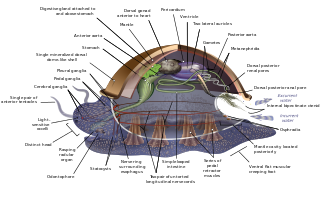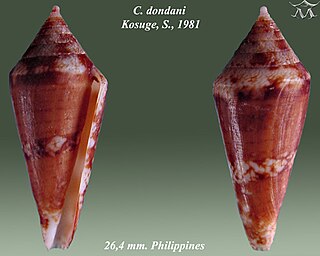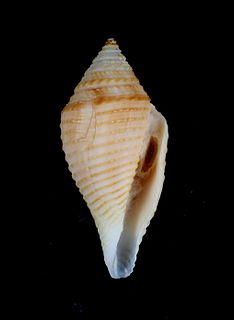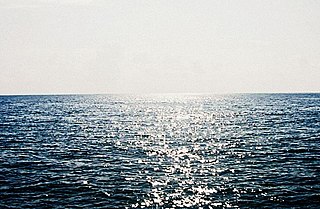
Bivalvia, in previous centuries referred to as the Lamellibranchiata and Pelecypoda, is a class of marine and freshwater molluscs that have laterally compressed bodies enclosed by a shell consisting of two hinged parts. Bivalves as a group have no head and they lack some usual molluscan organs like the radula and the odontophore. They include the clams, oysters, cockles, mussels, scallops, and numerous other families that live in saltwater, as well as a number of families that live in freshwater. The majority are filter feeders. The gills have evolved into ctenidia, specialised organs for feeding and breathing. Most bivalves bury themselves in sediment where they are relatively safe from predation. Others lie on the sea floor or attach themselves to rocks or other hard surfaces. Some bivalves, such as the scallops and file shells, can swim. The shipworms bore into wood, clay, or stone and live inside these substances.

Sacoglossa, commonly known as the sacoglossans or the "sap-sucking sea slugs", are a clade of small sea slugs and sea snails, marine gastropod mollusks that belong to the clade Heterobranchia. Sacoglossans live by ingesting the cellular contents of algae, hence the adjective "sap-sucking".

Conoidea is a superfamily of predatory sea snails, marine gastropod mollusks within the suborder Hypsogastropoda. This superfamily is a very large group of marine mollusks, estimated at about 340 recent valid genera and subgenera, and considered by one authority to contain 4,000 named living species.

The evolution of the molluscs is the way in which the Mollusca, one of the largest groups of invertebrate animals, evolved. This phylum includes gastropods, bivalves, scaphopods, cephalopods, and several other groups. The fossil record of mollusks is relatively complete, and they are well represented in most fossil-bearing marine strata. Very early organisms which have dubiously been compared to molluscs include Kimberella and Odontogriphus.

The Gryphaeidae, common name the foam oysters or honeycomb oysters, are a family of marine bivalve mollusks, and are a kind of true oyster. This family of bivalves is very well represented in the fossil record, however the number of living species is very few.

Tridacninae, common name, the giant clams, is a taxonomic subfamily of very large saltwater clams, marine bivalve mollusks in the family Cardiidae, the cockles.
Thraciidae is a taxonomic family of small saltwater clams, marine bivalves in the order Anomalodesmata.

Manzanellidae is a fossil family of bivalves, in the order Solemyida. They were previously considered containing fossil and recent members of Nucinellidae.

Mollusca is the second largest phylum of invertebrate animals. The members are known as molluscs or mollusks. Around 85,000 extant species of molluscs are recognized. The number of fossil species is estimated between 60,000 and 100,000 additional species.

Juliidae, common name the bivalved gastropods, is a family of minute sea snails, marine gastropod mollusks or micromollusks in the superfamily Oxynooidea, an opisthobranch group. These are sacoglossan (sap-sucking) sea snails, and many of them are green in color.
William B. Rudman, usually known as Bill Rudman, is a malacologist from New Zealand and Australia. In particular he studies sea slugs, opisthobranch gastropod molluscs, and has named many species of nudibranchs.

Profundiconus dondani is a species of sea snail, a marine gastropod mollusk in the family Conidae, the cone snails and their allies.

Pygmaeconus traillii is a species of sea snail, a marine gastropod mollusk in the family Conidae, the cone snails and their allies.

Conasprella coromandelicus is a species of sea snail, a marine gastropod mollusk in the family Conidae, the cone snails and their allies.
Angeline Myra Keen (1905–1986) was an American malacologist and invertebrate paleontologist. She was an expert on the evolution of marine mollusks. With a PhD in psychology. Keen went from being a volunteer, identifying shells at Stanford, and having no formal training in biology or geology, to being one of the world's foremost malacologists. She was called the "First Lady of Malacology".

Lopha is a genus of marine bivalve molluscs in the family Ostreidae.
Nucinella owenensis is a species of small, monomyarian, nuculoid bivalve.

Nucinellidae is a family of bivalves, in the order Solemyida. Its species are small and principally reside in deep-water environments. The species' average length is less than 5 millimetres (0.20 in), the largest species being Nucinella boucheti at a length of 25 millimetres (0.98 in). The family's characteristic features include large gills and reduced palps and their appendages; oval shells with few hinge teeth; they possess a single adductor muscle and one divided foot exhibiting papillae. The family contains two known genera: Huxleyia and Nucinella. Speaking of Nucinella, the genus' ligament system is of the simple arched type, lacking nymphae. Regarding the former, the system is "submerged" beneath its dorsal margin.















